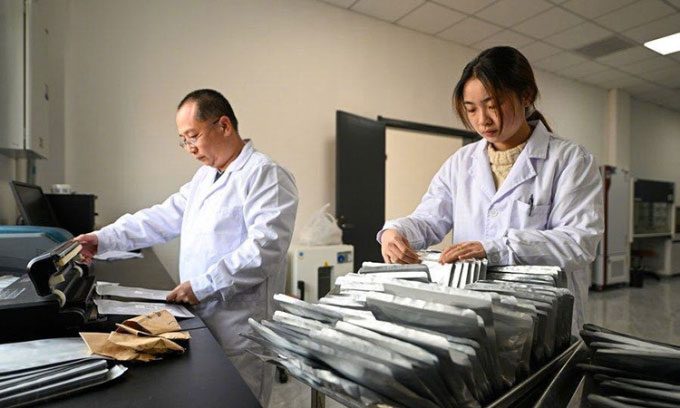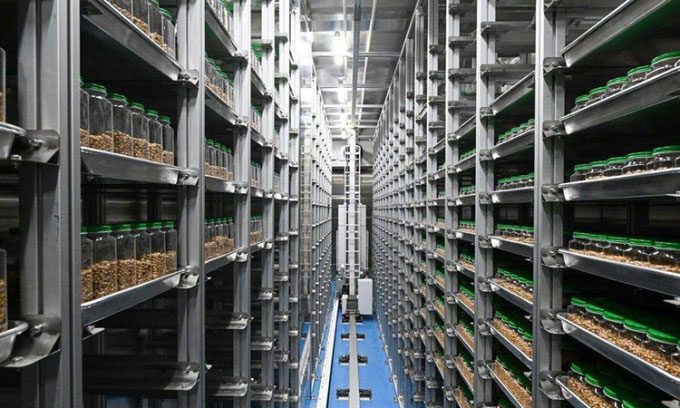To protect species diversity and food security, China is intensifying the establishment of seed banks to preserve plant genetic resources.

A researcher examines plant seeds in Tianjin. (Photo: Xinhua)
At the Tianjin Agricultural Seed Resource Bank under the Tianjin Academy of Agricultural Sciences, researchers are conducting comprehensive tests on the germination rates and moisture content of corn and soybean seeds. Recently, this facility received over 500 new seed resources, Xinhua reported on April 5.
Lan Qingkuo, Deputy Director of the Seed Resource and Biotechnology Institute, stated that crop gene resources are cultivated plant materials with genetic functions, playing a vital role in food security, species diversity, and innovation in agricultural technology.
“We have established 8 different seed banks, where plant germplasm resources are preserved in a low-temperature and constant humidity environment,” noted Dr. Wang Lu at the Tianjin Agricultural Seed Resource Bank while packing seeds in aluminum foil bags with 2D barcodes. “Information about the seeds, including type and source, can be quickly displayed after scanning the code, providing convenience for subsequent research activities.”

Two researchers pack seeds in aluminum foil bags with barcodes. (Photo: Xinhua)
According to Cui Shuhong, Director of the Ministry of Ecology and Environment of China, the rapid extinction of species is an urgent issue the world faces today. The Food and Agriculture Organization of the United Nations estimates that 75% of crop diversity has been lost since the early 20th century.
In the face of this loss of genetic resources, seed banks distributed around the world are expected to help protect species diversity. The Tianjin Agricultural Seed Resource Bank houses many “old varieties” that are difficult to find in the market.
“As high-yield and quality varieties are widely planted due to strong promotion efforts, some old varieties have been lost over time,” Lan said.
Some old crop varieties may have lower yields and weaker resistance but are very flavorful. If properly preserved, they can aid in scientific fields such as gene mapping and species evolution research, while also contributing to breeding new varieties that are “both delicious and high-yielding” in the future.

Interior view of the Tianjin Agricultural Seed Resource Bank. (Photo: Xinhua).
To date, the Tianjin Agricultural Seed Resource Bank has preserved over 47,000 genetic resources from 111 species across 75 genera in 26 families, including food crops and vegetables, from various regions.
In addition to Tianjin, similar gene banks and seed resource banks have been established across China to expedite biodiversity conservation. Statistics show that the number of agricultural germplasm resources preserved long-term in China has exceeded 520,000, ranking second in the world.
“Based on the extensive collection of gene resources, we can deeply analyze their genomic and phenotypic data while utilizing big data and biotechnology to design and plant new seeds that meet specific needs,” Lan emphasized.





















































